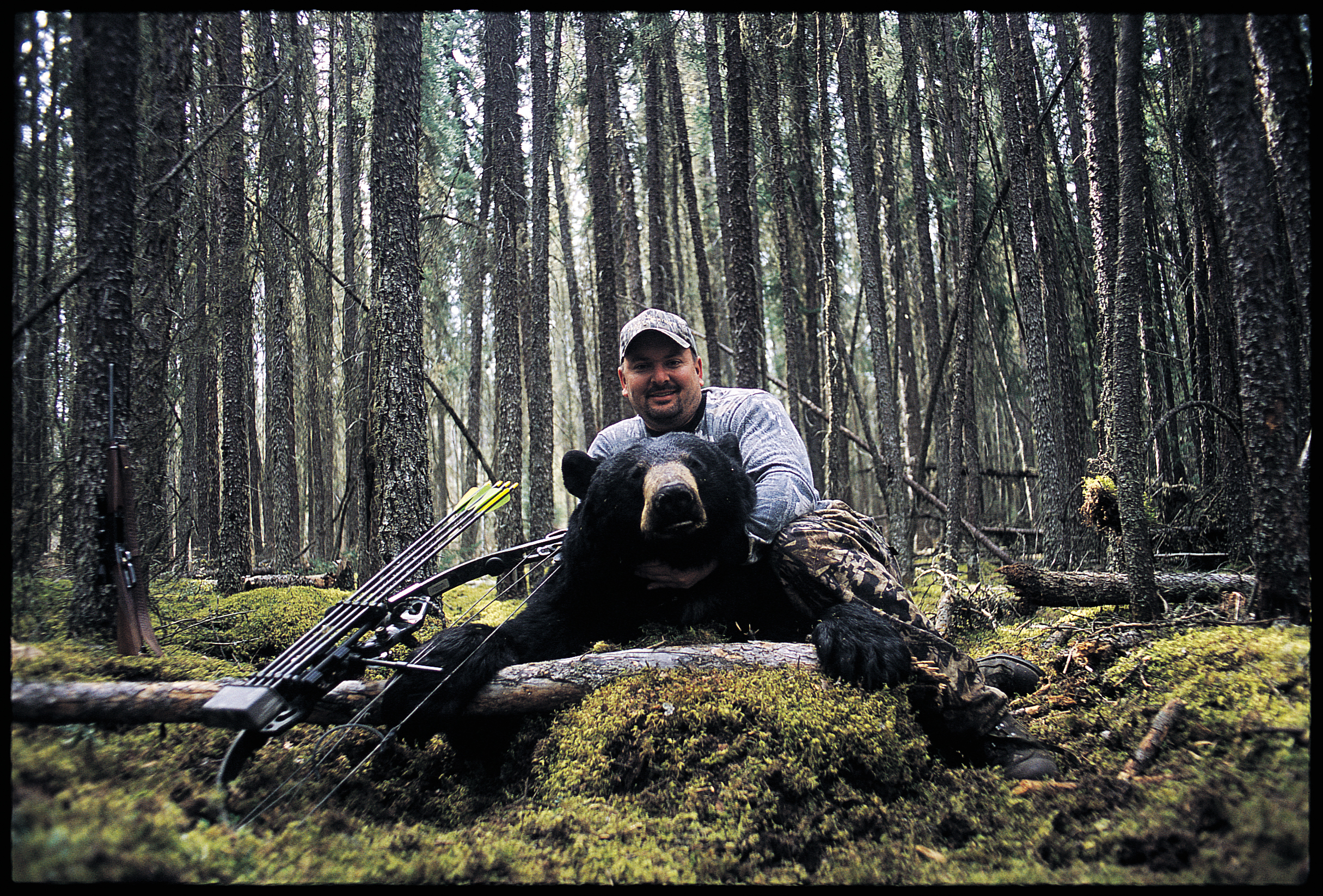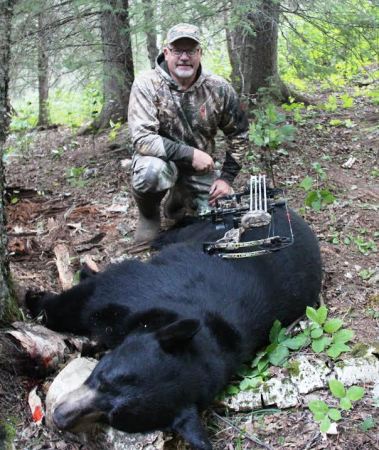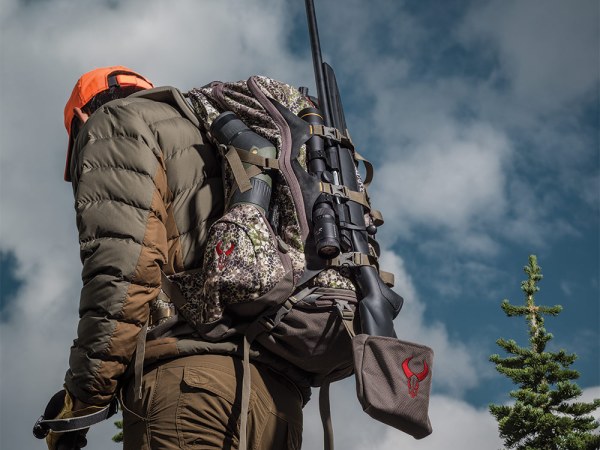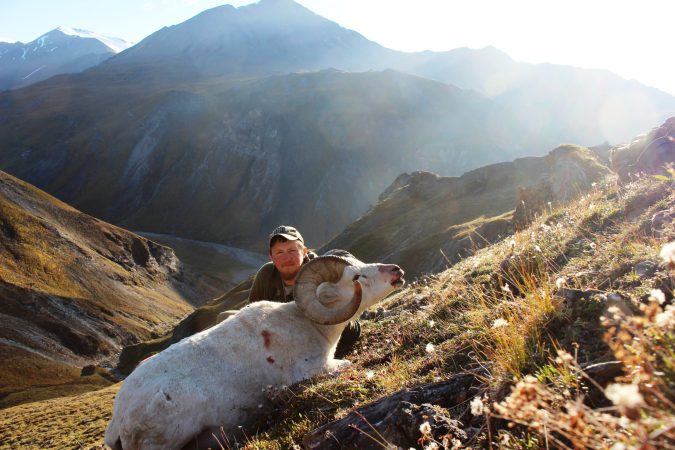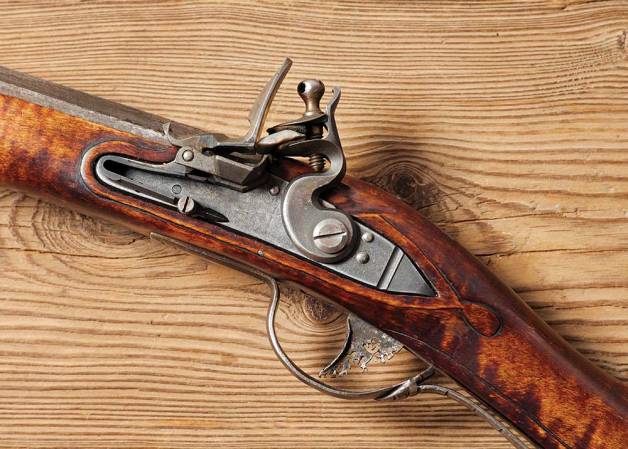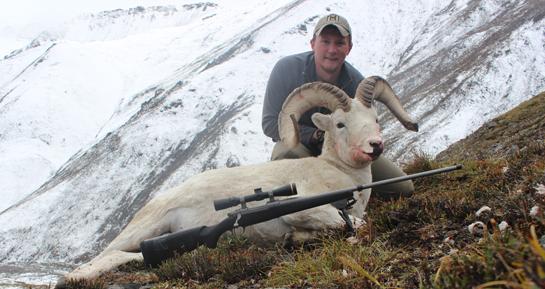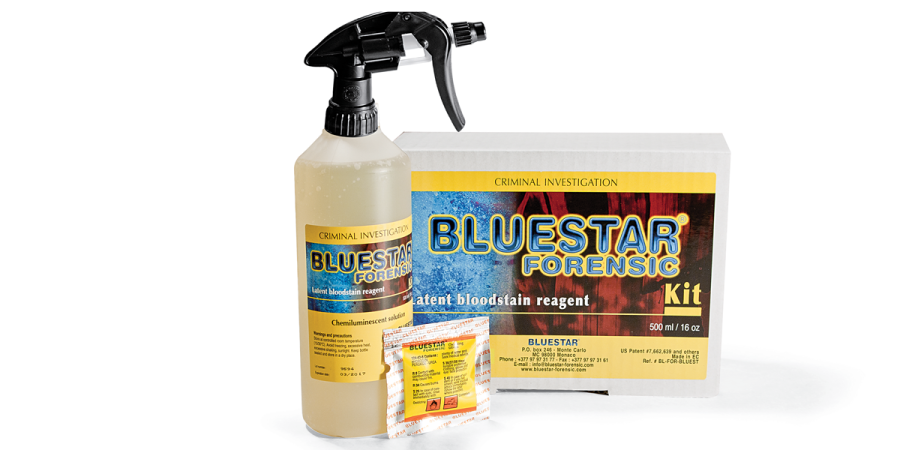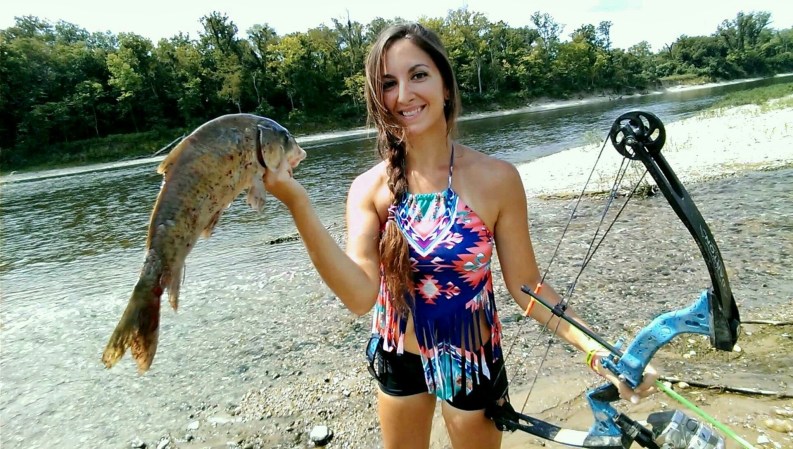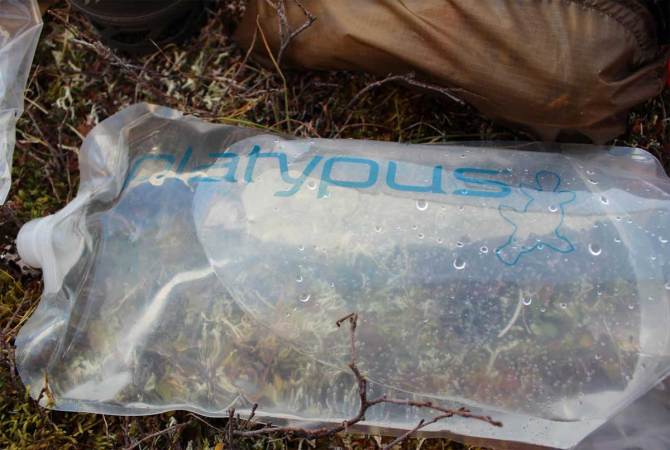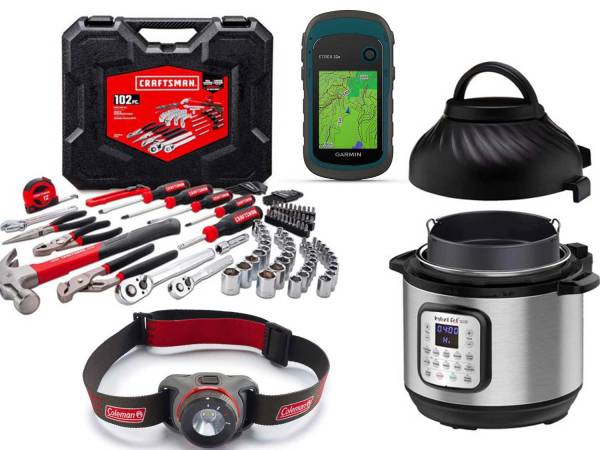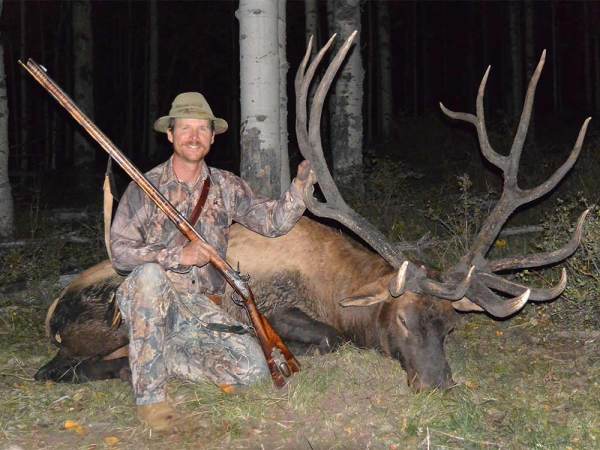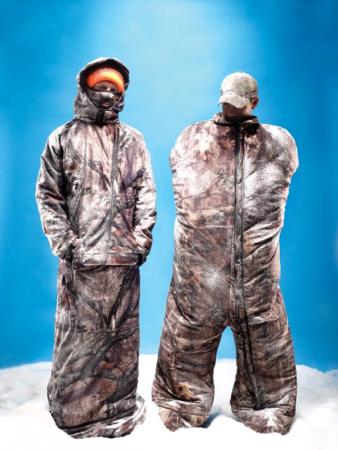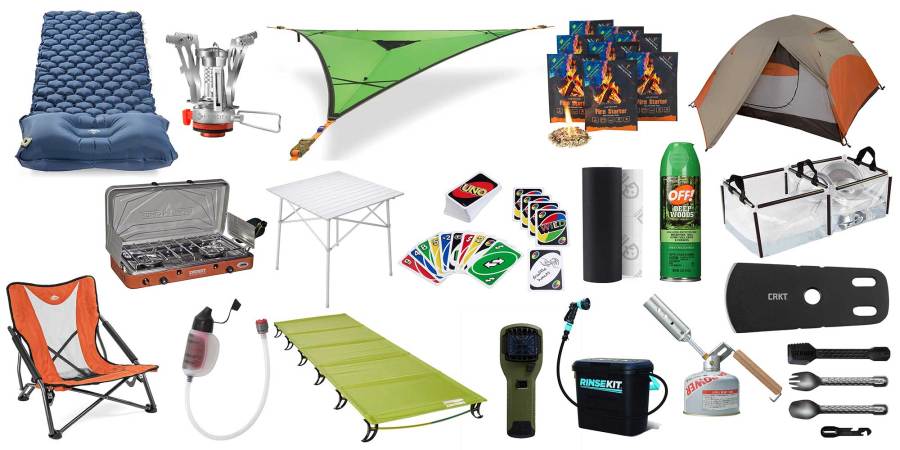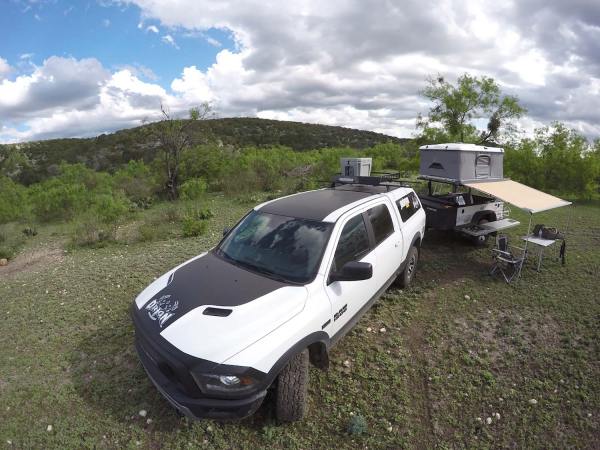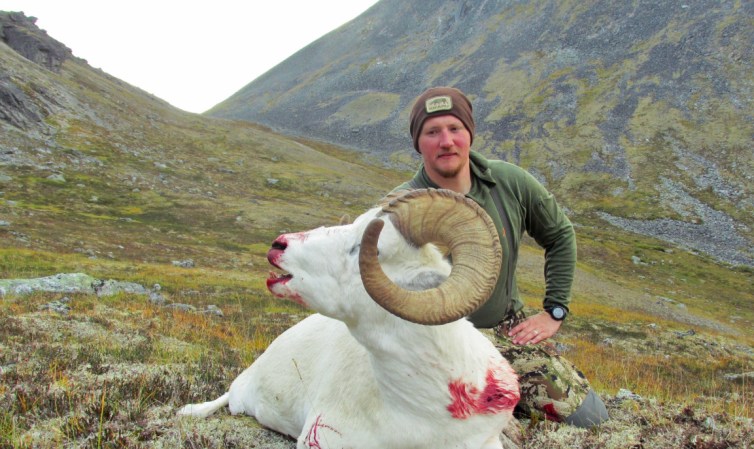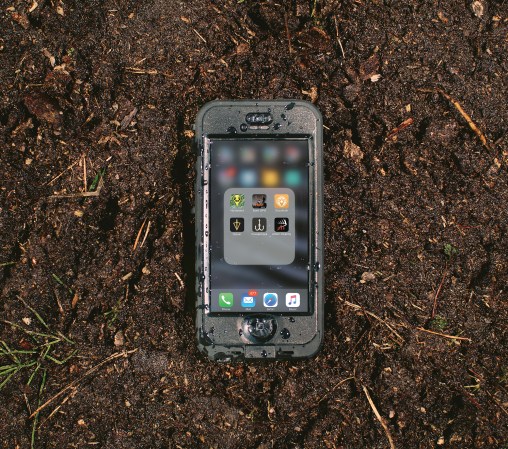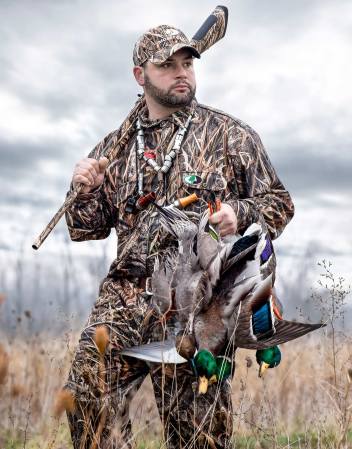We may earn revenue from the products available on this page and participate in affiliate programs. Learn More ›
It’s true that you may not hear a more-invigorating sound in the spring woods than the booming thunder-clap gobble of a seriously love-sick tom, but for me the quintessential spring hunt is for northcountry black bears. And the farther north, the better. There’s just something about the sights and pungent-sweet smells of a northern spruce forest in full bloom, complete with skittering marten, inquisitive fishers, and maybe a dinner or two of freshly caught walleye or pike. That is, if you’ve packed your travel rod and done the necessary (and highly recommended) research to ensure an exciting “surf and turf” combo adventure.
Bowhunting for black bears isn’t a gear-intensive pursuit like chasing whitetails certainly can be, but there are several ever-present items in my spring bear arsenal that have helped me score on rangey spring bruins, and will likely help you as well. For the purposes of this article, we’ll consider the most-popular form of spring bear hunting: hunting over established bait sites.
1. Large Daypack
Baiting black bears is a heck of a lot of work for the baiter, but when it comes time to hunt these sites the best “weapon” in your arsenal is often a good dose of patience. Depending on where you are and who you’re hunting with, your stints on stand waiting for Mr. Bruin will likely last 4 to 8 hours, plenty of time for unstable spring weather to change. And more often than not, the change will be dramatic. That means you’ll need to carry an extra insulating layer (a silent fleece or ultra-compressible Primaloft jacket or vest is smart) as well as a full suit of rain gear, and enough food and water to keep you alert and focused for the duration. To carry these items and those discussed below, I like a daypack that can hold a minimum of 2,000 cubic inches; closer to 3,000 is even better. Great choices are the Tenzing TZ 2220, Badlands Tree Stand Pack, Sitka Tool Bucket, and Easton Outfitters Bowhunter 2000.
2. The Right Bow Holder
I’m a firm believer that most every bear that comes looking for the bait knows you are there too, but even the cagiest bears will tolerate your presence, and eventually present a good shot, if you can remain statue-still and otherwise eliminate unnecessary movement. Also, know that even the largest bears can surprise you with their stealthy approach, and if the undergrowth is thick enough, it means you might get caught off guard. This is why I like an adjustable bow holder that keeps my bow hanging directly in front of me, and pointed right at the bait for quick and easy access. Several models are available including those that screw onto a treestand frame or platform; I like the models that screw into the tree above you and have two or three adjustable, pivoting arms that allow you maneuver your bow into a very precise position. I’ve had good luck with the Realtree 3-Arm EZ Hanger; newcomer Hawk Hunting has some great-looking choices that include the Tactical Trio Tree Hook, and GoGadget that extends from 14.5 to 36 inches, and swivels to position your bow and other gear precisely.
3. Thermacell Unit
To be honest I’m not a fan of these remarkably efficient mosquito-repelling wonders in the deer woods—believing their scent to be detrimental—but bear hunting is another matter entirely. One (or two) of these units placed near your feet can be absolute saviors in the mosquito-laden Canadian bush country, where I’ve never seen mosquito hordes any thicker.
4. Bug Proof Headnet
Actually, better make it two. Before Thermacell units there was wearing two headnets to fight off thick clouds of spring mosquitoes and blackflies. However, Thermacell units can sometimes malfunction and you’ll need some type of backup. Carrying two headnets (practice shooting with them on beforehand) is the type of safety net that can save a hunt. Or at least your sanity.
5. Laser Rangefinder
Many newbies assume that, since they have a large barrel of bait in front of them at their stand site, that the shot will happen right at the barrel. That’s simply not always the case, especially when dealing with larger, older, warier bears that may never get closer than 15 or 20 yards from the bait before suddenly deciding it’s time to vamoose. It happens. Knowing the distance to all those nearby forest openings—and being mentally ready to shoot them at a moment’s notice—can mean the difference between going home with a trophy…or sour tag soup. Bring a quality rangefinder and use it regularly; you’ll certainly have the time on your hands.
6. Safety Harness
While it’s true that most bear stands set by outfitters are lower than most whitetail stands, due mainly to the better shot angles lower stands offer, coupled with most bears’ relative indifference to your presence, this doesn’t mean you should skip wearing a safety harness. Long stints on stand in warming spring weather can literally lull some bowhunters to sleep, and of course there are myriad ways one can get into trouble even 12 or 15 feet off the ground. Don’t count on an outfitter providing a harness for you. Never forget to pack a quality harness.
7. An Extra Stand
Smart do-it-yourselfers will have all the gear needed for the job, but this one is aimed mostly at those who are going guided. If you’re driving to your completely outfitted bear hunt, a smart addition to your gear is one or two compact hang-on stands paired with some type of climbing system such as a set of climbing sticks or screw-in steps. Just in case. The fact is, your bear outfitter may or may not have extras, and sometimes you can outwit wary bears that have memorized the location of baits and well-used stands, by setting up a small portable on a well-defined bear entrance trail, 20 or 30 yards away from the bait or existing stand. It’s an often-overlooked detail that can pay huge dividends.
8. Hip Boots
After more than 20 bear hunts spanning several states and three different Canadian provinces, one aspect of spring bear hunting I know I can count on is water—and typically, plenty of it. If you’re not crossing swollen creeks or jumping in and out of boats while using rivers or lakes to travel to bait sites, you will be accessing bear stands via ATV or 4×4, using wilderness two-tracks that will invariably feature plenty of dangerously flooded sections. Hip boots, or the newer-style rubber boots that feature built-in expandable “gaskets” are just plain useful in many of these instances, keeping you drier and warmer than standard knee-high rubber boots. If you drive to your hunt there’s no good reason not to pack a pair, and you’ll likely be happy you did.
9. Extra Patience
This was mentioned previously but it’s worth restating. Black bears are easily misjudged when it comes to trophy quality; everyone seems to want a jaw-dropping (or at least representative) trophy, yet the “up-close-and-personal” nature of this hunt can sometimes result in feverish, knee-jerk decisions that some newbies later regret. The answer? Relax, have fun, and take your time making the shot. When in doubt, hold off. When a true whopper saunters in, you will likely know it.
